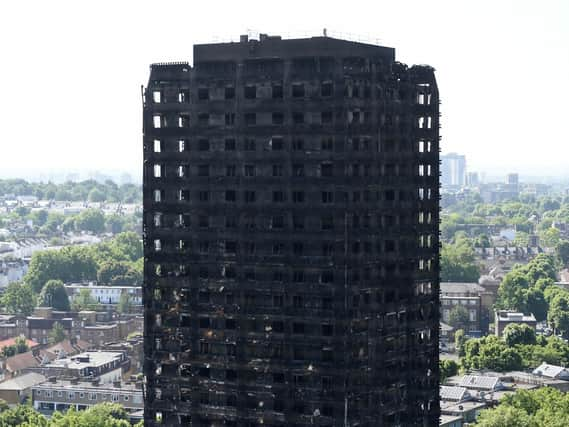Combustible cladding discovered on three Tower blocks in UK


The at-risk buildings are not being identified until the landlords have had the opportunity to inform tenants, according to the Department for Communities and Local Government.
Councils were told to provide the Government with details of the cladding used on high-rises by Monday and three samples were found to be combustible.
Advertisement
Hide AdAdvertisement
Hide AdFlammable panelling on the outside of Grenfell Tower is suspected to have aided the rapid spread of last week's blaze, trapping dozens inside.
The department said it had been carrying out checks on the panels of council towers after receiving the reports back from local authorities.
It comes as the Prime Minister announced that a probe into whether cladding in Grenfell Tower met fire safety regulations will be published in the next 48 hours.
Theresa May faced questions over whether the material had passed fire and building safety tests when the West London tower block had been refurbished.
Advertisement
Hide AdAdvertisement
Hide AdCalls were made for combustible materials to be banned in tower blocks during an urgent Commons statement on the deadly fire.
Pressed by Labour's Hilary Benn on the whether the cladding had been deemed safe, Mrs May said: "My understanding is the fire service and the Building Research Establishment (BRE) - and BRE were there on the scene very early to look at this issue - they have been identifying the cause of the fire and any contributory factors to the fire.
"They are testing the cladding on the building and they expect to make the results of this public, I think in the next 48 hours."
Liberal Democrat Tom Brake led calls for an immediate ban on combustible materials within residential tower blocks and urged ministers to increase pressure on councils to do safety checks when converting non-residential buildings for housing.
Advertisement
Hide AdAdvertisement
Hide AdResponding, Mrs May told MPs: "What we need to ensure is that when the fire services, when the police have done their investigation, that any action that is necessary immediately as a result of the identification of the cause of the fire and the reasons why the fire took such hold - which is the issue that is of particular concern, then any action that is necessary is taken and it will be taken."
Amid calls for landlords to be given incentives to retro-fit sprinklers, she warned that "in not all cases will it be the case that the retro-fitting of sprinklers is actually going to be the thing that makes the difference".
Labour's Yvette Cooper asked Mrs May why she could not tell the Commons whether the cladding used on Grenfell Tower was compliant with building regulations for a building of the same height.
Mrs May asked MPs to remember that there was a criminal investigation under way, and said: "The testing of the cladding, the testing of the materials used is being undertaken and a statement will be made by the police and the fire service within the next 48 hours."
Advertisement
Hide AdAdvertisement
Hide AdWarnings that the insulation used in the Grenfell Tower refurbishment was flammable had been published on the website of its manufacturer.
Celotex confirmed that it supplied its RS5000 insulation for the £8.6 million renovation of the block.
According to details published online, the material "will burn if exposed to a fire of sufficient heat and intensity".
It has also been speculated that if a rain-proof layer had been added to the building a small cavity could have been created, which acted as a wind tunnel and accelerated the spread of the flames.
Advertisement
Hide AdAdvertisement
Hide AdRS5000, according to Celotex's website, has a Class 0 rating under UK building regulations, meaning it has the highest rating for preventing the spread of flames and prevents the spread of heat.
However, its "health and safety datasheet" notes: "The products will burn if exposed to a fire of sufficient heat and intensity.
"As with all organic materials, toxic gases will be released with combustion."
Design specifications suggest the renovation work carried out at Grenfell Tower included plans for a 50mm "ventilated cavity" next to 150mm of Celotex FR5000 insulation, which also has a Class 0 rating.